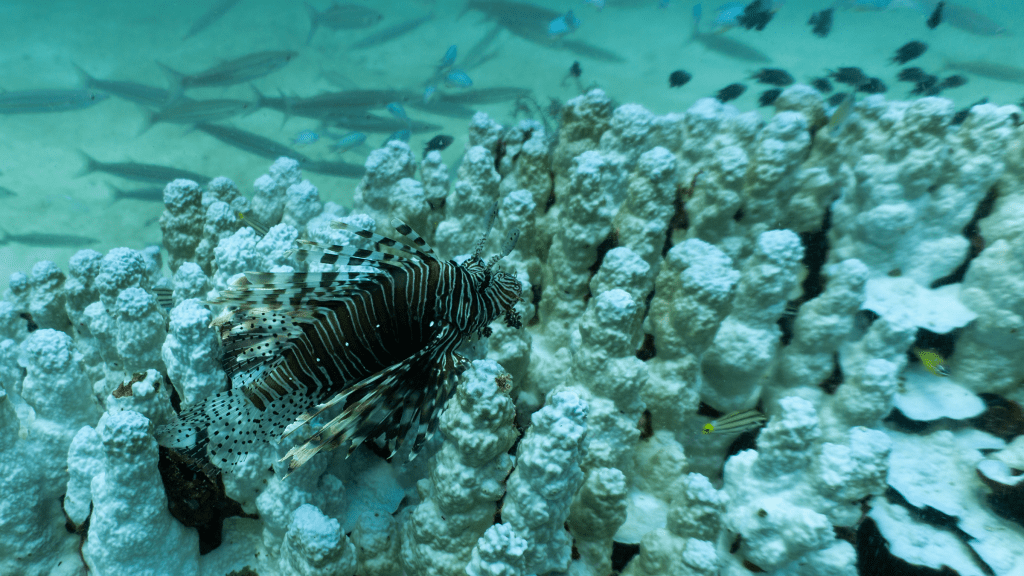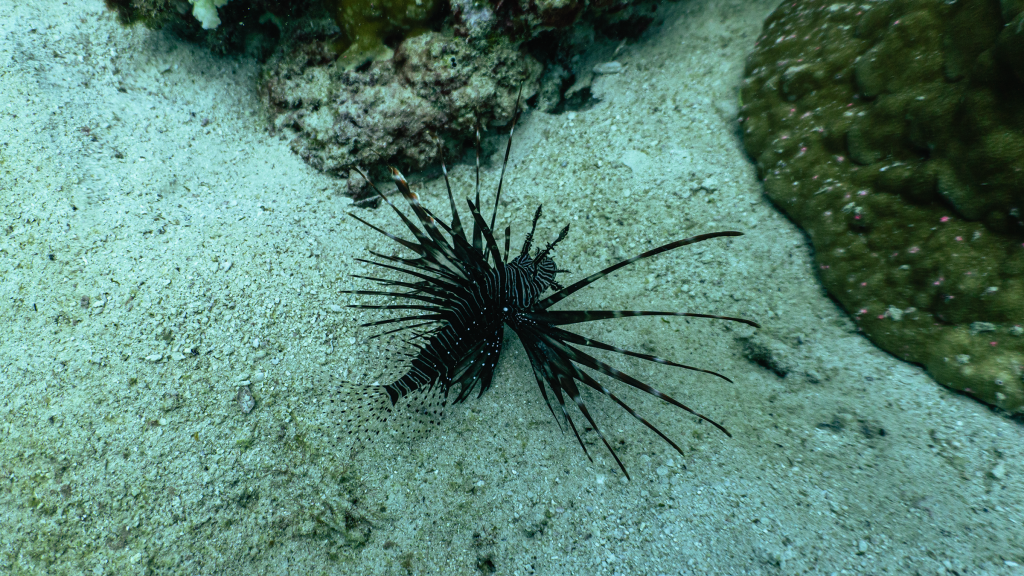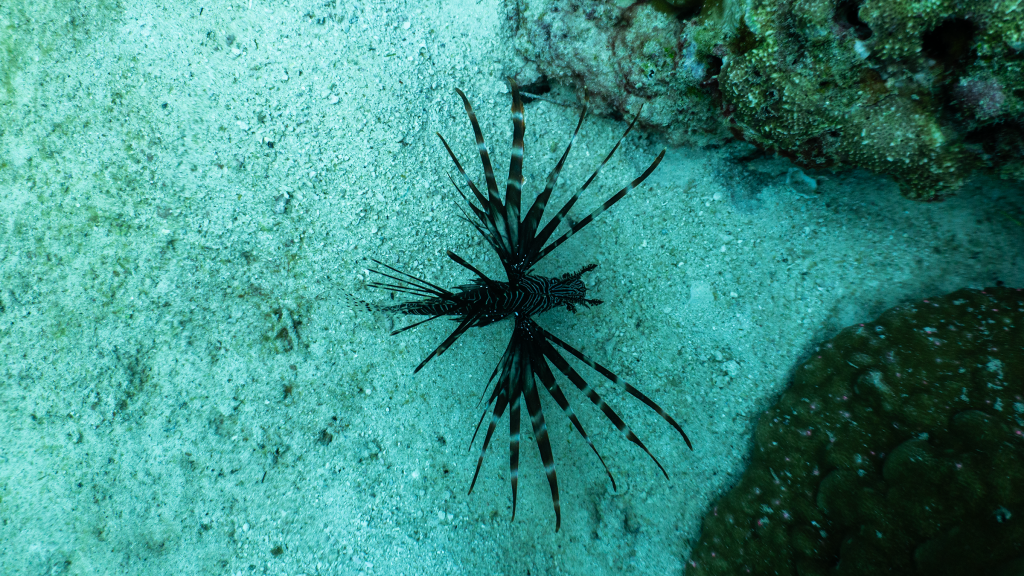Red lionfish

The red lionfish has a large head with protruding eyes and a wide mouth, adorned with distinctive appendages. Its fins surround its body, creating both a defensive and aesthetic display. The front of the dorsal fin consists of long venomous spines, the pectoral fins are elongated ribbon-like rays, and the other fins are wide and fan-shaped. White vertical lines on the body contrast with the reddish-brown tones, and the light-colored fins are speckled with small dark spots. The maximum length of the fish is 30 cm.
The red lionfish leads a solitary, nocturnal lifestyle. During the day, it hides in caves among corals and rocks, pressing its belly to the surface and extending its venomous spines outward for protection. It is an ambush predator, feeding on crabs, shrimp, mollusks, and small fish. It blends with the environment, resembling colorful algae, which helps it camouflage and await prey.

The red lionfish inhabits tropical waters of the Indian and Pacific Oceans, including areas around China, Japan, Australia, and the Caribbean. It occupies shallow lagoons and the outer slopes of coral reefs at depths ranging from 2 to 55 meters.
The red lionfish poses a serious threat to humans due to its potent venom. The venom remains active even after the fish's death, and its stings cause severe pain that can last for hours. In severe cases, multiple stings can lead to complications, including paralysis of the skeletal and respiratory muscles. The lionfish actively defends itself by swiftly turning and using its dorsal spines as a weapon when threatened.

